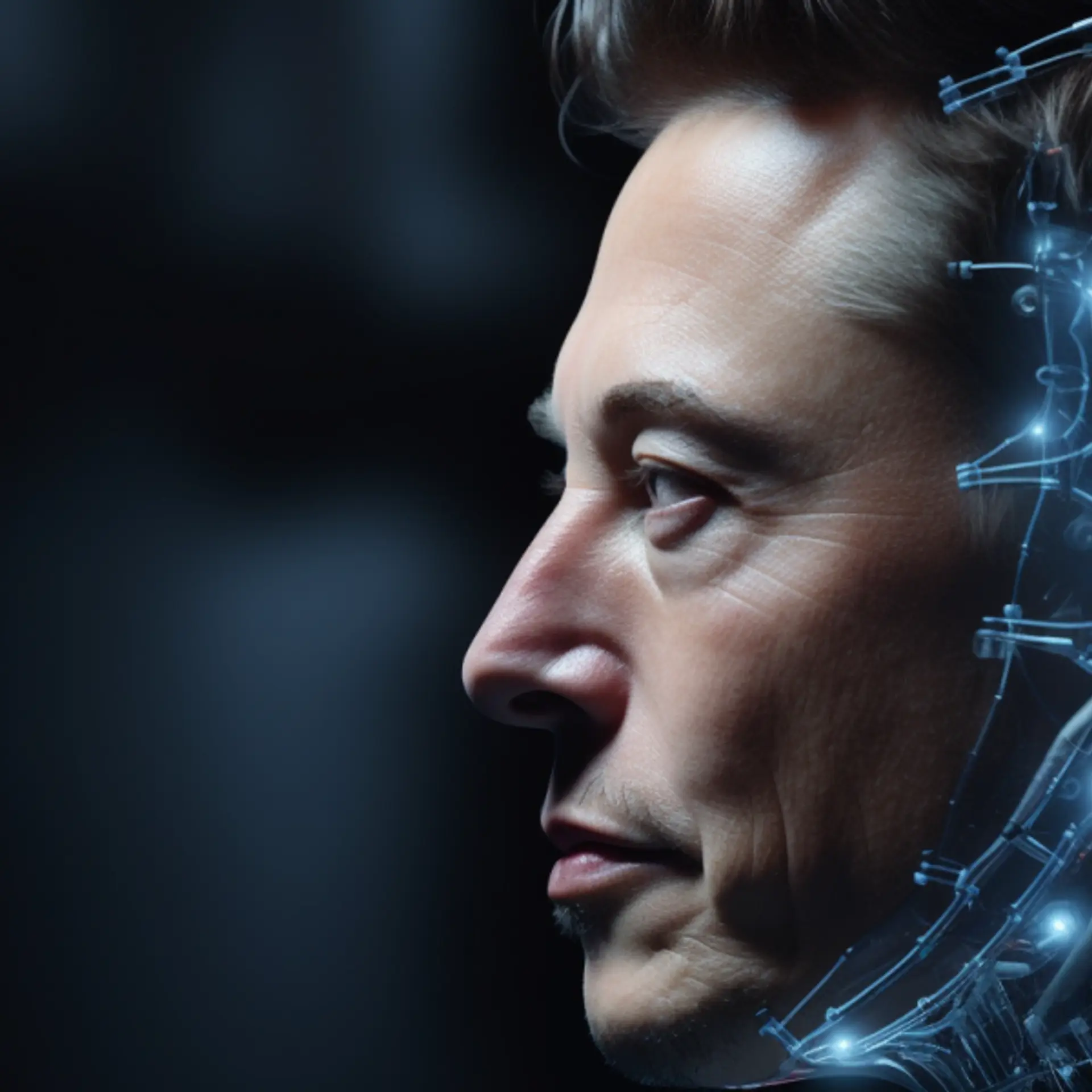Empathise, experiment, educate: 12 tips on design and entrepreneurship from Nasscom Design Summit
Design experts from across India gathered at Nasscom's flagship event to offer tips on connecting design, innovation and entrepreneurship. Here are 12 key tips for startups.
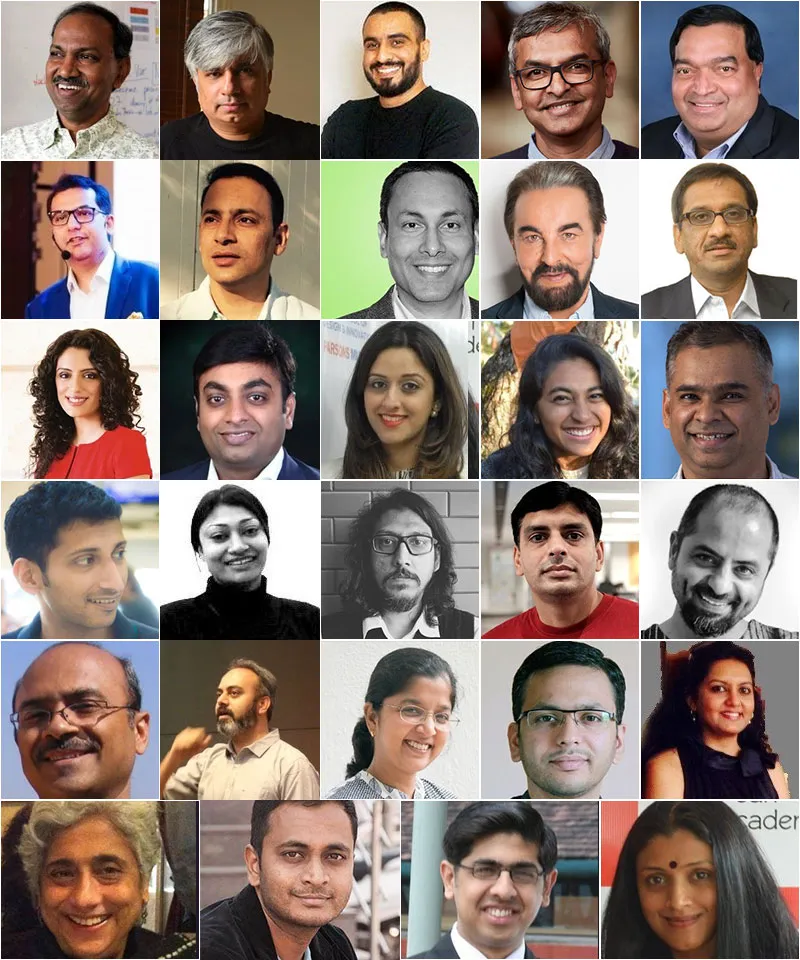
Design is being increasingly valued as a long-term success factor in a globalised fast-moving market. The Design Management Institute’s Design Value Index shows that publicly-traded design-led firms outpace other firms by over 200 percent in valuation.
How can design, innovation and entrepreneurship be galvanised for India’s startup ecosystem? Nasscom’s recent Design4India summit in Bengaluru, themed ‘Embed Design in Your DNA,’ brought together a range of founders, designers, corporate leaders and academics to discuss ways to promote India’s design quotient.
Workshops were also held on business model design for healthcare (by Sarang Gupta and Navyug Mohnot of QAI QGlue), mobile design (Mahesh Marath, Think Design Collaborative), and gaming engagement for customers (Manya Cherabuddi and Rajeshwari Math, Spread Learning).
Here are my top 12 clusters of insights from the one-day event of keynotes, panels and workshops. See also my takeaways on the importance of design from conferences such as DesignUp, NASSCOM Product Conclave, and UX India (2015, 2014).
- Design for experience delight
Design should not be added as an afterthought, but should be embedded in product teams right from the beginning, according to panellists Kapil Karekar (Technology/Product Consultant, Kalaari Capital), Sahil Karkhanis (Senior Director, Product Design, Cleartrip), Ramesh Kozhissery (Senior Manager, User Experience, Walmart Labs) and Gaurav Mathur (Senior Director, User Experience Design, Myntra).
Product teams should have a mix of tech and design skills right at the onset (see my book review of Product Leadership). The ultimate aim should be an experience that delivers customer delight, since just usability is no longer the differentiator. The product or service experience should be designed to be seamless across offline and online channels.
Techies tend to get carried away with product features and gadgets, while business heads may be full of jargon – but for business success, the customer cares only for simplicity. “Simplicity is on the other side of complexity, but you must go through complexity and reduce it to get to the simplicity stage. Iterate to elegance,” advised Ranjan Malik, Co-founder, Primalise (see my writeup of his innovation framework with Anisha Motwani in their book, Storm the Norm).
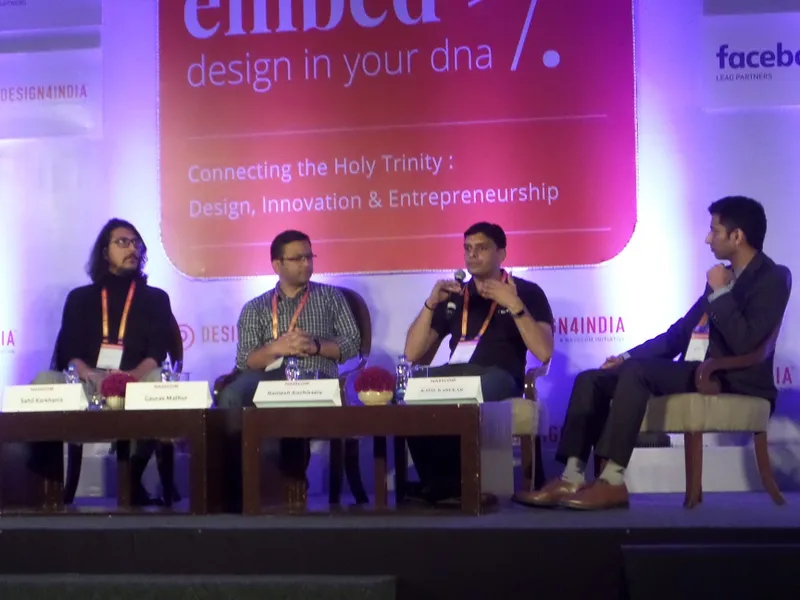
- Embed design in organisational culture
Lakshman Pachineela Seshadri, Head of Innovation, SAP Consulting, outlined a number of principles to ensure that the design message is understood and implemented in a company: perform like a band, create sticky process, include play elements, promote habit-forming rituals, and evangelise the message.
The levels of maturity along this curve are awareness, practice and expertise. The design message should be encapsulated in simple terms, as in the case of IBM (understand-explore-prototype-evaluate) and SAP (discover-design-deliver). See also my framework of The ‘8 Is’ of design thinking for startups.
Rewards should be given for good design, and failure lessons understood and shared. The bias should be towards action and not endless hypothetical analysis. Awareness can be increased by conducting workshops on design for those without a design background (eg. in SAP), or talks by external experts (as practised by Microsoft). SAP also has extensive academic cooperation in research and coaching for design capabilities, in Stanford (d.School) and Potsdam (Hasso Plattner Institute).
For startups, it is important to understand that design is not cheap, and they must find a way to afford it. The kinds of designers to bring on board for a startup are those with an iterative mindset and an eagerness to engage proactively with customers.
- Understand the customer workplace and habitat
Illustrations of designers at work tend to focus on walls full of sketches and post-its, but the reality is that much of the design inputs should come from outside – from the customer’s journey at work, home, transaction setting, and in transit.
Observing how nurses used writing pads and instruments at hospital beds led to effective design of tablet-based interfaces at Narayana Health centres, said Anil Reddy, Founder and Design Director, Lollypop UI/UX Studio. Scaling implies that such workflows should effectively operate across diverse work settings.
Much e-commerce design has focused on the shopping and delivery experience. But it is important also to focus on what happens when a customer wants to alter the purchased product, like a pair of pants, said Peyush Agarwal, Global Strategic Design Director, DesignIt (a design firm acquired by Wipro).
“Can the alteration process also be designed as part of the delivery process? What are the implications for the cost and complexity of this extra activity,” Peyush asked, advising service designers to integrate “frontstage and backstage” aspects of the ecosystem.
Observation, immersion and interaction reveal valuable insights for designers, even leading to participatory design and co-creation. It is important to focus not just on the product but the consumption experience.
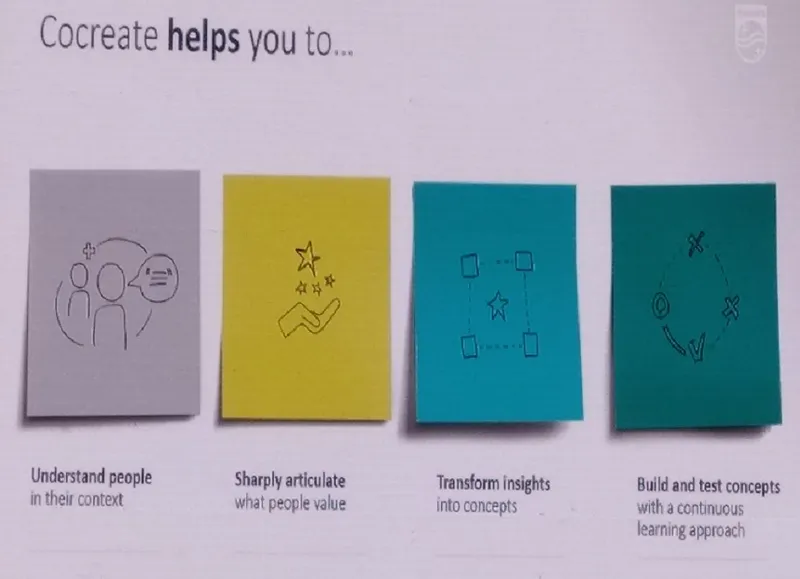
Tequila apparently derives some of its popularity from the design of the drinking ritual (‘lick salt from your hand, drink a shot, suck a lime’). This has now been extended by creative consumers to licking body parts other than just the hand, joked Ranjan Malik.
- Storytelling
Design is more than physical product or digital interface – it is also about communication design. Storytelling plays an important role in business and social success, explained Ameen Haque, Founder and Story Coach, Storywallahs.
Successful stories go from ‘I’ to ‘we,’ from facts to emotion. “Change your words to change your world,” said Ameen, advising the use of methods like story-listening and story-spotting. (See also my reviews of the books Let The Story Do The Work, The Storyteller’s Secret, and Whoever Tells The Best Story Wins.)
- Design that can sustain scale
Many design case studies focus on the early stages of product development, but it is design at scale which defines long-term success for rapidly growing startups. This entails not just continuous tweaks as the user base grows, but big leaps as well. Impact metrics should cover processes as well as overall strategy (see my writeup on five kinds of business metrics).
Design in IT firms in India has now evolved into visual design, information architecture, and service design, said Atul Manohar, UX Director, Informatica.
Designers in large companies work on multiple projects, and hence there need to be effective knowledge communities as forums for peer learning, advised Soaib Grewal, Venture Partner, T-Labs.
Digital media are rapidly changing Indian consumer attitudes towards product discovery, shopping and transactions, and design at scale will help companies tap this transformation. Scale applies at the level of society as well as city.

Designing safe and productive urban environments requires asking the right questions and connecting the right dots, according to Unmesh Kulkarni, UX Director at Honeywell. Design of city-level management systems needs to find the balance between standardised templates and the unique local character of a city.
In an era of global warming and rapid urbanisation, it is important to design secure, resilient, comfortable and energy-efficient cities. Honeywell has implemented digital infrastructure solutions in India in cities like Rajkot.
- Designing for rural markets
Much business focus has understandably been on urban markets, but the next boom in India is in its smaller towns and villages. Many studies have shown the impact of delivering goods and services in small ‘sachets’ to increase affordability.
But merely decreasing price and advertising cheap products is not enough. Immersion in rural habitats will reveal that many rural consumers actually do have spending power, but they prefer to spend more on educating and feeding their children than buying hygiene products for themselves.
In such cases, designing interventions via grassroots communication is a better approach, advised Sahil Karkhanis of Cleartrip. Design is ultimately about value, not just price or cost. See also YourStory’s coverage of initiatives like 1Bridge to understand and market to rural consumers.
- Embrace diversity
Diversity across lines of age, religion, gender, sector, language and country can create a fertile pool of ideas and experiences for cross-pollination. For example, Philips successfully took to Italy its experiences with designing machines in China for making noodles and soups.
Google Maps used its experiences with landmark-based navigation in India to other markets like the US. Many other such examples are analysed in the book Reverse Innovation by Vijay Govindarajan and Chris Trimble (see my book review).
- Mapping design competencies
Design means many things to many people, and organisations should work out a common definition that suits their strategy, industry space, and aspirations. Some of these capabilities can be built in-house while others can be acquired via design consultants, according to a panel featuring Bulbul Chaudhary (Chief Consultant, ISDI Mumbai), Anirudha Joshi (Professor, IIT Bombay), and Deepa Nagraj (Head of Communications, Mphasis).
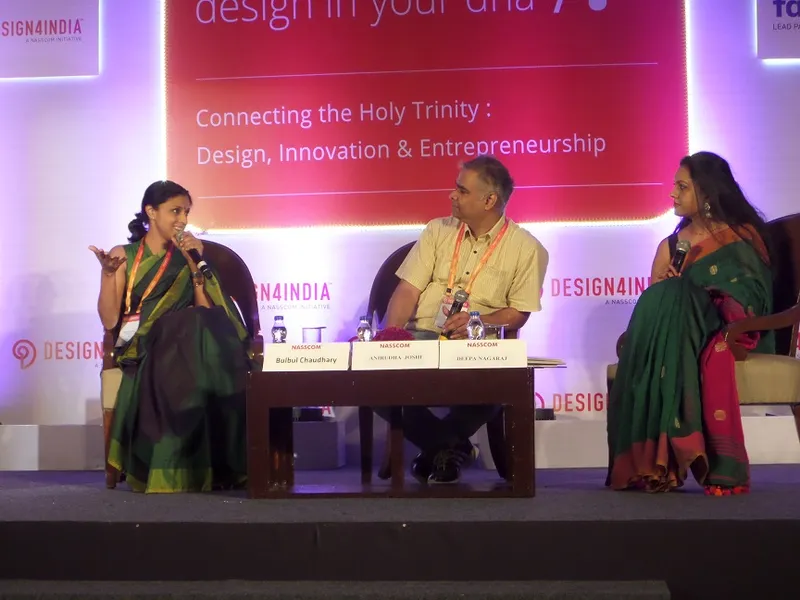
Design spans visualisation, imaging, sketching, media, coding, pattern recognition, and creativity across material and digital domains. It covers individual and group settings, in on-site and virtual locations, and in co-located as well as dispersed teams.
A company is said to be design-led if design is prominently built into its structure, processes, culture, and leadership, with extensive financial backing. It is one thing to hire a good designer, but another to build a conducive environment to retain and nurture them, according to the speakers.
India has a long way to go to increase its design quotient to the levels of Italy or even China. India graduates 25,000 designers a year, as compared to 5,00,000 in China, observed Bulbul.
- The crucial role of academic institutes
To create a broader design capability across society, a vital role is played by academic and research institutes, according to Radha Kapoor, Founder and Executive Director, Indian School of Design and Innovation (ISDI), and Geetha Narayanan, Founder Director, Srishti Institute of Art, Design and Technology.
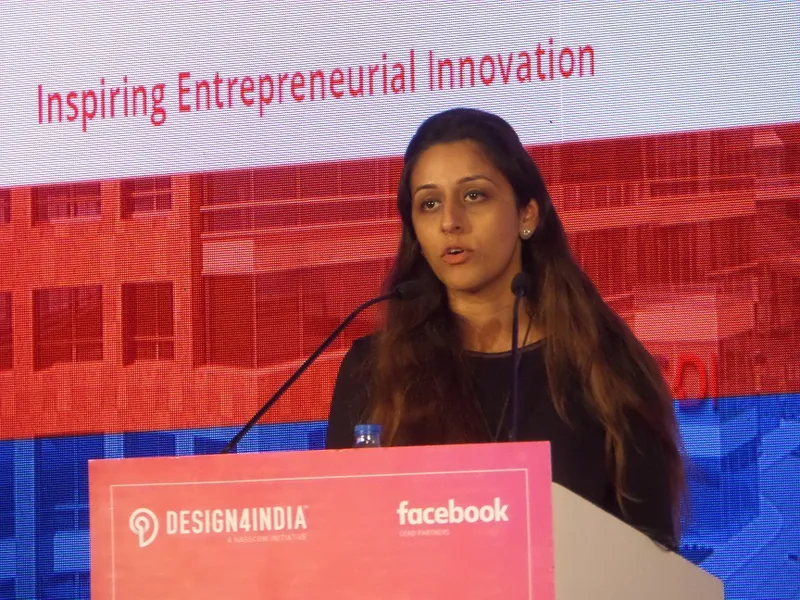
Radha is an active promoter of initiatives such as Design, Innovation and Creativity-led Entrepreneurship (DICE) and Accelerating Creative Entrepreneurs (ACE). Multi-disciplinary cross-pollination at ISDI’s campus is enabled via two towers for design and entrepreneurship.
The campus hosts a Culinary Arts Accelerator and a number of smart city initiatives. ISDI also has a partnership with Parsons School for Design in New York.
ISDI has spawned a number of design-led projects in this regard: SEHAT (telemedicine), KHAAD (composting), Talking Tree (VR controller), NIDRA (sleep-aiding eye mask), Connecting Dots (device for the visually impaired), WEEMO (child seat), City Bulls (electric bike), FERRIS (bike parking solution), and Hridhaan (app to track calorie intake).
“The importance and success of design also needs to be shared via stories,” said Radha. ISDI has launched the site R-Directed in this regard.
Preparing industry and society for the future of work in Industry 4.0 should be a priority of academic institutes, said Geetha. The conceptual age of startups needs to work together with the models of the agriculture, industry and information ages.
Preservation and promotion of culture should also be a focus in countries with a vast heritage such as India. Art and design need to come out of galleries, museums and labs into public spaces such as parks, malls and metros (see my photo essays on the Whitefield Art Collective and BeFantastic Festival).
Srishti offers degrees in Impact Entrepreneurship for capacity-building in social enterprise. “A culture of resilience as well as resilience of culture need to promoted,” said Geetha. The habits of “hand, head and heart” need to come together to create holistic development.
There will be much disruption and confusion in the years to come, as society evolves down the path of mechanisation, electrification, digitisation, and cyber-physical systems. “But we must give our students inconvenient truths rather than reassuring lies about the future,” urged Geetha.
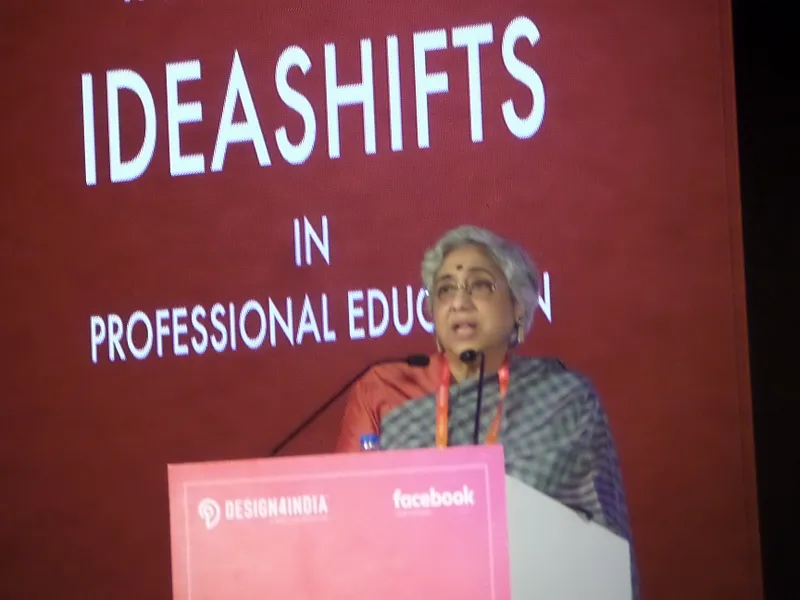
“We also need to focus on design for social change to get people out of poverty,” said Shriya Kariappa, Design Consultant, Industree Crafts Foundation. It is important to map citizen and stakeholder interactions, and design for dialogue.
- Design in healthcare
Connected design in the healthcare ecosystem can help India address its looming health crisis, said Abhimanyu Kulkarni, Creative Director and Design Centre Manager, Philips Design.
There is a rise in diabetes, respiratory diseases, hypertension and other chronic illnesses. But India has a shortage of 2,00,000 ICU beds. At the same time, there are 500 million rural Indians with mobiles, and 100 million with smartphones.
Connected care and health informatics can help develop and scale new solutions, said Abhimanyu. He pointed to emerging examples such as networked ECG devices and chest ailment clinics.
The new challenges are availability, accessibility, affordability and awareness about these new solutions by professionals and patients. “Connected solutions and artificial intelligence (AI) can have leapfrogging effects,” said Abhimanyu.
Healthcare providers will have to work with data that is wide (longitudinal), deep (to the level of cells and molecules), and dense (aggregated across the population). There will also be potential for “augmented work” with medical professionals working along with smart instruments and robotic agents. “The future is about collaboration,” urged Abhimanyu.

- Environmental and humanitarian ethics
Design is not just about focusing on the customer, but on broader issues of society, justice and the environment – also referred to as sustainability design or responsible design (see my book review of Designing Tomorrow’s World Today by John Thackara).
“Designers are powerful – you can reflect your core values and beliefs in your work,” said Parveen Dusanj-Bedi, CEO, BediMedia. Business models can be designed in such a way that they avoid practices like child labour, violation of labourer rights, and exploitation of civil or military strife (the movie Blood Diamonds highlights such issues). “Pay attention to the karma of design,” advised Parveen.
- Design and magic
There is much talk on the hard and soft metrics of return on investment (RoI) of design and how to make it a systematic, replicable and scaleable practice. But one should not forget the magic and spirituality of design, said Kabir Bedi, President, BediMedia.
The movie star cited a famous quote by Albert Einstein: “The most beautiful thing we can experience is the mysterious. It is the source of all true art and science.”

“Words are plenty enough, but good ideas are like gold,” said Kabir. “Unblock your creative energies. Make time for the mysterious, magical and spiritual,” he signed off.
In sum, design is a key factor to build long-term value for emerging economies such as India. Annual events focusing on design open the door to long-term collaboration and research to assess India’s design quotient and amplify its ancient and contemporary design dividend.






